Fishing for crabs in Brazil's mangrove forests
Reuters photographer Nacho Doce has documented the changing landscape of mangrove forests in Cairu, Brazil, and the livelihoods of people who fish for crabs and oysters.
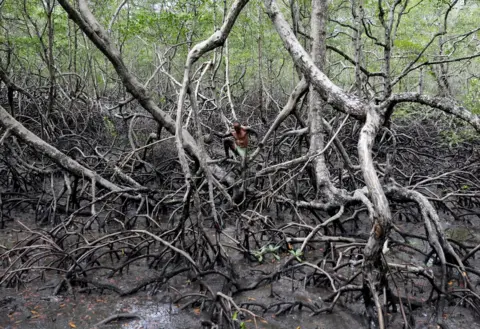 Nacho Doce / Reuters
Nacho Doce / ReutersThe photographer visited a community of mud houses along the edge of the Caratingui River, known as The Train because the single-file homes look like train carriages.
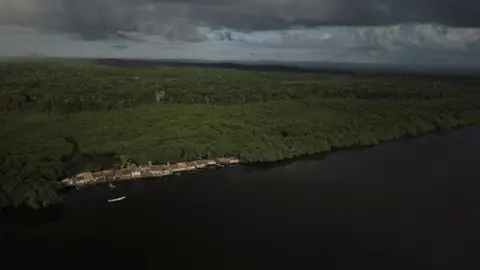 Nacho Doce / Reuters
Nacho Doce / ReutersMangroves cover 13,989 sq km of Brazil's coast and are an important protection against climate change, with one acre of mangrove forest absorbing nearly the same amount of carbon dioxide as an acre of Amazon rainforest.
The forests also protect the coast from eroding as intense storms grow more frequent.
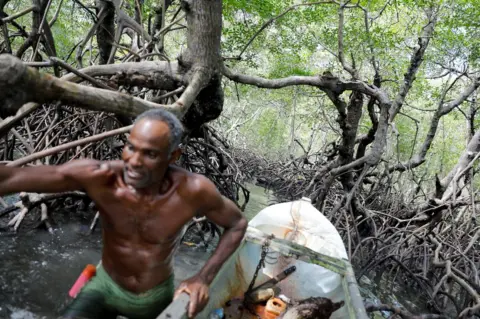 Nacho Doce / Reuters
Nacho Doce / ReutersFisherman Jose da Cruz, above, makes his living by fishing for crabs where freshwater rivers meet the brackish Atlantic Ocean.
Instead of a rod or a net, he uses his hands to search for crabs in the mud among the mangrove trees, sometimes lying flat on the ground and reaching deep down.
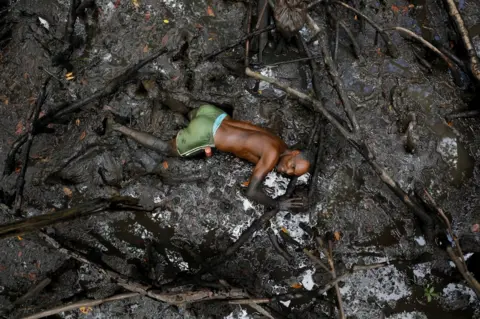 Nacho Doce / Reuters
Nacho Doce / ReutersHis daily catch of several dozen crabs will earn him 200 reais (£40) a week, enough on which to survive.
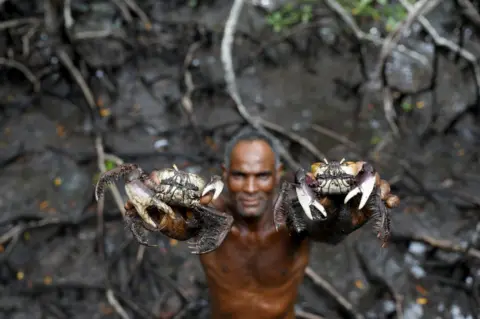 Nacho Doce / Reuters
Nacho Doce / ReutersMr Da Cruz says his daily catch is half what it was 10 years ago and in that time the water line has advanced 3m (10ft) inland.
According to climate researcher Carlos Nobre, at the University of Sao Paulo, water levels have risen 20-30cm (1ft) over the past 100 years in coastal Bahia state, where Cairu is located.
A battery-powered radio has given Mr Da Cruz a link to the rest of the world and enabled him to learn about the science of climate change.
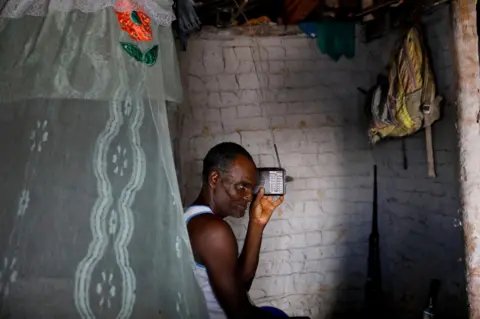 Nacho Doce / Reuters
Nacho Doce / Reuters"Nature is upset," he says. "In Antarctica, it's melting, nature is melting.
"People, you have to have some awareness about what is happening. It's clear what is happening."
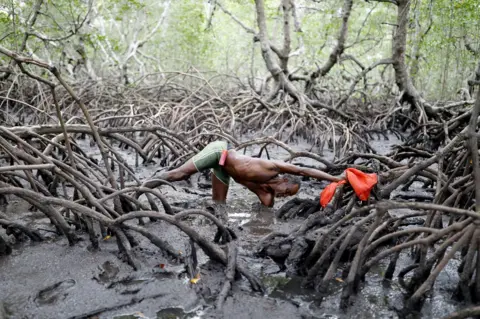 Nacho Doce / Reuters
Nacho Doce / ReutersScientists predict the global surface temperature will have risen by more than 1.5C, above pre-industrial levels, by the end of the 21st Century.
And some prediction models in a 2014 report by the United Nation's Intergovernmental Panel on Climate Change (IPCC) say this temperature increase will actually exceed 2C, without unprecedented changes within human societies.
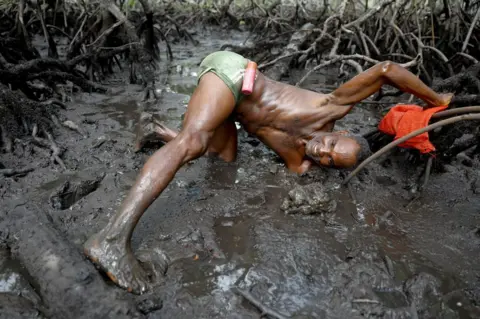 Nacho Doce / Reuters
Nacho Doce / ReutersBiologist Renato de Almeida, from the nearby Federal University of Reconcavo da Bahia, says overfishing is also a likely cause for the decline in crab and fish populations.
Mr Da Cruz and his wife, Vandeka, harvest oysters as well as crabs from the mangrove forest.
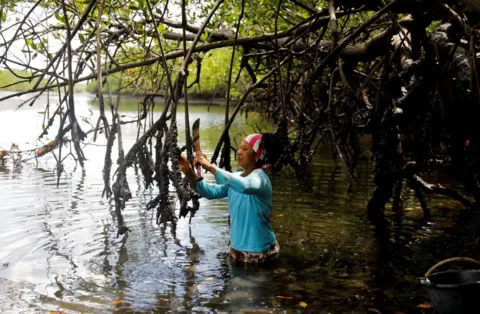 Nacho Doce / Reuters
Nacho Doce / Reuters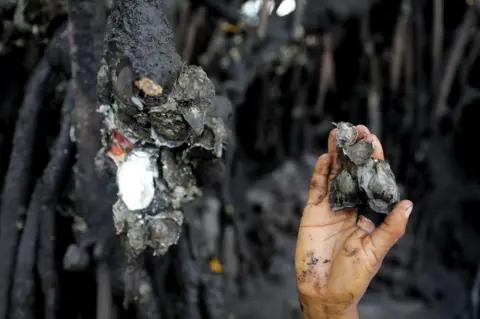 Nacho Doce / Reuters
Nacho Doce / ReutersOther factors that affect fishing include growing tourism, leading to the clearing of mangroves to build inns and piers for visitors.
An increase in water traffic can disrupt oysters on riverbanks and erode the attachment of mangroves to the soil.
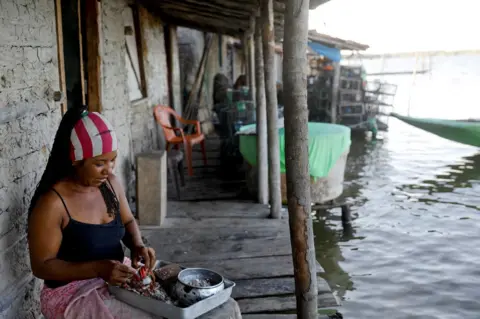 Nacho Doce / Reuters
Nacho Doce / ReutersPhotos by Nacho Doce.
